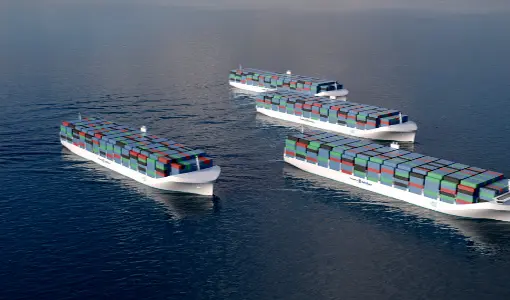How ISO 19030 boosts hull performance

TIN news: As ship owners and operators work to improve their fleet and hull performance, and reduce their fuel bills and emissions, the industry welcomes new ISO 19030 standard for measurement of changes in hull and propeller performance, Jotun announced. In cooperation with DNV GL, the company has hosted several seminars world-wide, to raise awareness on the new standard and how it will affect the shipping industry.
As the company explains, the ISO 19030 standard development took three years and involved collaboration by 53 expert industry stakeholders. It is developed to measure reforms in ship hull and propulsion performance in an accurate way.
Geir Axel Oftedahl, Director of Business Development at Jotun Marine, explained: “With this standard we can finally quantify how solutions, such as advanced antifouling coatings, can tackle that issue – providing accountability and a return on investment for ship owners, while detailing the enormous potential for cuts in fuel costs and emission reductions.”
The standard comes at a time when market pressure and regulatory developments are forcing the maritime industry to focus on energy efficiency and meeting environmental challenges. Many stakeholders believe the standard represents a milestone and offers much needed transparency for buyers and sellers of a wide range of fuel saving technologies and services.
Rory Kennedy, Senior Analyst, Energy Management at Royal Caribbean Cruises, commented: “The ISO 19030 standard is a very good baseline for ship owners to begin tracking their hull performance, which can significantly increase efficiency and reduce emissions; sometimes upwards of 20%. The standard should evolve over time to encapsulate the latest innovations in data analytics in order to facilitate the industry as a whole and push improving efficiency even further.”
Anders Lenning, Fleet Performance Analyst at Wilh. Wilhelmsen believes the standard will “provide operators with a better understanding of hull performance over time, especially in relation to capturing trends”.
“There’s a common consensus that if you can measure it, you can manage it, and we support that thinking,” commented Karl Wisløff, Technical Manager at Colorline. “One can use the standard to document performance but different parties will have a different focus on it.”
While there is wide consensus that performance monitoring is necessary and good, some see challenges. The main drawback, according to Vineet Bhalla, Engineer Superintendent, MOL Tankship Management (Europe), is that the current market conditions promote a need to cut costs, which may make this tool unpopular.
He also made reference to the “fragile container industry”: “Owners and managers are only looking to comply with the mandatory new regulations, which includes a very expensive BWMS. Another deciding factor will be the cost of installing the supporting tools in order to use this standard”.
Commenting on the challenges, Stein Kjølberg, Global Sales Director of Jotun Hull Performance Solutions, said that in today’s market, the focus on energy efficiency and sustainable shipping is of extreme importance, as is the increasing scrutiny of company operations.
“If you want to stay ahead of the game, customers need to recognize you as a provider of proven and reliable services that can be measured and benefit the customer and their stakeholders. Irrespective of the cyclic nature of shipping, it is the only way forward for responsible suppliers, owners and the environment.”
Further, he explained: “In order to comply with ISO 19030-2, which is based on high frequency data, a datalogger, torque meter and some cabling is required. Alternatively flowmeters can be used. Both torque meters and dataloggers are becoming very affordable these days, and the return on investment is easily captured within a month.”
Kjølberg further argued that even though ISO 19030 is a voluntary standard, the ability to make better decisions for the future, improve transparency and achieve better alignment between the various stakeholders would be of high value to everyone involved.
“We urge operators to start using the standard, and they do not need to ‘go all in’ from the beginning. We recommend that they start by improving the quality of the noon reports and get familiar with the methodology. As a next step, they can look into investing in the required equipment in order to comply with ISO 19030 and get more accurate performance data.”
Summing up exchanges at the recent Hull Performance & Insight Conference (HullPIC), Geir Axel Oftedahl said:
“The new standard delivered on its stated aims, and represents a good starting point to offer a level playing. It will evolve as experience is gained and ideas are shared for further improvements. In the spirit of HullPIC, more discussion is needed to further advance hull and propeller performance management, and support the widespread adoption of ISO 19030.”















![AIRBUS A380 [MORE THAN 600 PASSENGER’S CAPACITY PLANE]](https://cdn.tinn.ir/thumbnail/4jCp4EQvCU0b/IjHVrSYQrIAqIzXuTzADR7qLYX4idQT4nfq__26E5SCUPLMqfhWkWajvuO9Wfq1ql1TjV4dhkrHliNQU82kMpo2NNftT_NGEwHc9KXtN_rk731bmifa2IQ,,/airbus-a380-structure1.jpg)

Send Comment